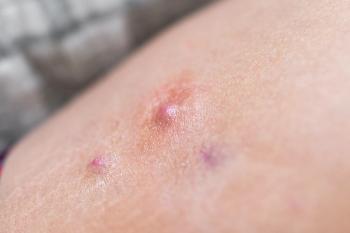
Frequent Flares Could Predict Disease Progression in Atopic Dermatitis
Frequent flares in atopic dermatitis predict future disease severity, highlighting the need for improved treatment strategies, as found in a new study published in JAMA Dermatology.
AD is a chronic skin condition that often begins in childhood and affects up to 20% of children and 10% of adults. In the U.S., approximately 16.5 million adults and 9.6 million children live with AD. Of these, 6.6 million adults and about one-third of children have moderate to severe disease, according to the Allergy & Asthma Network.
While severity is typically assessed through clinical symptoms, frequent flares—episodes of worsening symptoms—are not routinely factored into treatment guidelines. This gap can prevent patients, especially those with mild to moderate AD with frequent flares, from accessing stronger therapies that might prevent progression or improve quality of life.
A 2022 study published in ActaDV highlighted the importance of patient-reported outcomes in assessing disease burden.
It found that patients whose
This comparison between physician-assessed disease clearance and patient-reported outcomes displayed the need to incorporate tools such as the DLQI and flare history into treatment planning. Authors of the JAMA study suggest regular tracking of these measures could help identify patients who need better disease control—even when symptoms appear mild or temporarily resolved.
To explore this further, researchers used statistical and machine learning methods to analyze flare patterns and disease severity among adults in the Danish Skin Cohort.
Data were collected during two survey periods in 2022 and 2023 and included patients with dermatologist-confirmed AD. Researchers gathered demographic and clinical information, including comorbidities, flare frequency and quality-of-life scores.
Flares were defined as sudden symptom worsening, causing an increase in medication. Patients were asked to report up to 20 flares per year. AD severity was documented as mild, moderate or severe using validated tools.
The researchers used several tools, including computer models and charts such as the Sankey diagram, to find out which factors were linked to flare frequency and how severe patients' cases became over time. They tested how well their models worked using a method called cross-validation and used a technique called Shapley values to show which factors mattered most.
Out of the 878 adults studied, most experienced at least one flare in 2022, and nearly one-third reported more than 10. These patients were more likely to have worse AD severity and lower quality of life in 2023. Higher flare frequency was also linked to greater skin involvement, increased symptom burden and higher DLQI scores.
It was also found that flare severity, frequency and duration—along with age and weight—were among the strongest predictors of future disease severity.
The models showed moderate success in predicting whether a patient would have mild, moderate or severe AD the following year based on prior flare patterns. Patients with more flares in 2022 were also more likely to experience frequent flares in 2023, suggesting that disease control remains relatively stable over time unless effectively treated.
A key strength of the study is its use of longitudinal data, which allowed researchers to track flare patterns and outcomes over time rather than relying on a single snapshot. This approach provided insights into which factors—such as flare frequency and patient age—could help guide future care.
However, the study included limitations such as relying on self-reported data, which introduces the risk of recall bias or misidentification of flares. Patients may have difficulty distinguishing between AD flares and symptoms of other skin conditions.
Despite these limitations, the authors noted that flares should be treated as a central marker of disease control. Patients with frequent flares, even if their disease is classified as mild, may face a high burden and should be evaluated for alternative or stronger therapies.
While these predictive models show robust results, additional validation is needed before they can be used in clinical practice.
Newsletter
Get the latest industry news, event updates, and more from Managed healthcare Executive.





















































